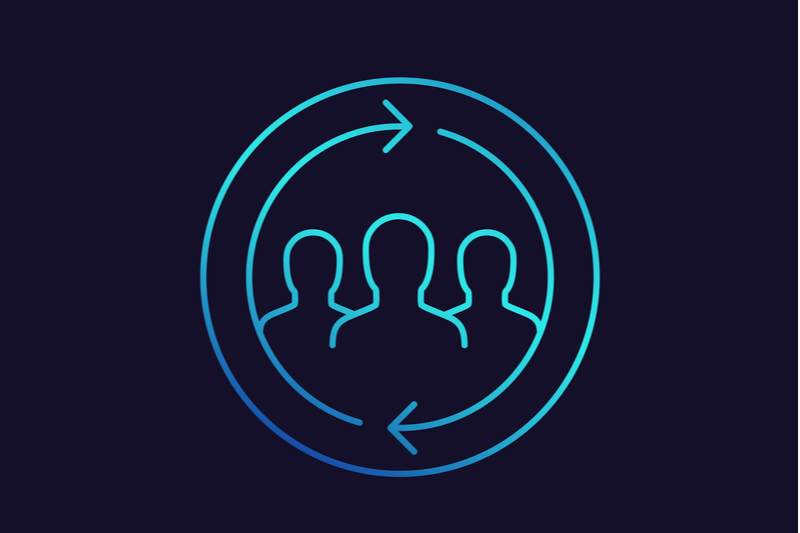Home » How to Drive Customer Retention with Resources, Relationships, and Shared Responsibility
How to Drive Customer Retention with Resources, Relationships, and Shared Responsibility
Madeline Turner

Customer Success has been a major focus for organizations recently. Specifically, how can we ensure that our customers are finding value in our products and services and that the value we provide is seen as essential to their business and success?
But ensuring customers’ success is more than just standing up a team or a function. This has to be an organization-wide priority, led by leadership, with a hyper-focus on customer relationships.
This is something that Diana De Jesus, Customer Success Manager at askSpoke and the engine behind CS resources like Keepthecustomer.com and Open Book of Customer Success, understands deeply. We grabbed a few minutes of her time last week to talk to her about customer retention, why relationships are as important as resources, and how frontline employees can elevate the data they’re gathering in conversations every day.
In this interview, Diana and Lauren address questions like:
- If companies are investing more in customer acquisition than customer retention, what kind of experience does this create for customers?
- How can teams refocus on strengthening relationships to drive customer retention right now?
- How can CS teams serve up customer insights to close the bigger loop with customers and help companies shift strategy cross-functionally?
- How can companies shift from customer retention being owned by one team to it being owned by all teams?
- What are the benefits of reducing friction and aligning teams around the customer?
Three Lessons on Customer Retention for Customer Success Teams and CX Leaders
1. Retaining customers means delivering on the value you promise during pre-sale.
There’s a big gap. It’s common for customer experience leaders to treat pre-sale as separate from the customer journey. But the experiences you deliver during the customer acquisition phase set the foundation for what customers will expect out of their experience with your product and services.
Organizations spend so much energy and resources on standing out from the rest but fail to deliver on the things the promised.
Imagine a person is seeing your ads online. They get excited — the value you offer seems to match their needs perfectly. They sign up for your tool, expecting for their problems to be solved. But they get in and the experience falls flat. Immediately, this excited new customer is a churned customer. The opportunity is lost. So much went into acquiring this customer and speaking to their needs, but not enough went into the strategy to continue to delight and deliver value.
What company is Doing this well? Drift.
I say this as a person that quickly got into Drift to give it almost like a test run, because they do a really good job of establishing their brand.. they were able to deliver exactly what they mentioned they were going to deliver from the beginning. They promised to shorten the sales cycle, and that’s exactly what happened when I got into the tool. – Diana De Jesus
And what’s important to note about Drift is that their Head of Customer Experience reports into the CMO. Their internal focus on keeping teams aligned throughout the customer journey is directly impacting the customer’s experience.
2. Relationships drive a deeper understanding of customer needs.
Relationships are a driving force of customer retention. Having a great product that delivers on the value you promised is critical. Equally critical is that you continue to build relationships with your customers, understand how their needs and goals evolve and continue to dig into ways your team can provide value.
Building relationships across your customer base starts with data so that you can understand:
- What’s the profile for a successful customer relationship?
- What were the steps taken to build that relationship and how can that be replicated?
- What were the key relationship drivers?
Not every customer is going to be the same, but it’s important that organizations are building processes that help teams build relationships at scale. Too often, teams act without really thinking about what’s worked well. We have to understand what’s worked, who it’s worked for, and then replicate (in an authentic way).
What company is doing this well? AppsFlyer
Ziv Peled is the Chief Customer Officer at AppsFlyer. He’s a really big advocate for customer relationships, and he nails it by understanding and defining what the relationship is like, the quality of the relationship, and what the team has to work towards. – Diana De Jesus
I can echo Diana’s enthusiasm for Ziv’s strategy. His team’s deep focus on relationships is driving incredible results. His team has generated over $100M in expansion revenue in the last 20 months for the company. The relationships his team is building aren’t just keeping customers around, they’re driving increased feature adoption and growth results.
3. Driving retention is every team’s responsibility.
Retention can’t just be owned by one team. It has to be something that’s owned cross-functionally so that everyone feels invested and can contribute to the cause. Otherwise, it’s just another team’s problem.
Having leadership involved from the very beginning and making sure that everyone is bought into the concept of owning this is extremely important. This ensures that retention – and the strategies that drive retention – is not put on the back-burner in exchange for short-term goals.
It’s easy to get distracted by the shiny and new, but teams have to evaluate everything from the perspective of customers — is this really what they want and what they’ve been asking for? Who are we building or creating this for and why?
We kind of get blinded by some of these short-term goals. Product is building features that no on has asked for and that have nothing to do with customer growth. Or sales is closing on customers that don’t match the ICP and will likely churn. These are the dangers of having retention sitting with just one team. Retention is the ultimate goal of driving a sustainable company, because you have to keep people in order to continue growing. – Diana De Jesus
We are in the Customer-Led Growth phase in our economy, where customers dictate where we should be as a company. We have to align teams around the customer to make sure that we’re moving that ball forward for them.



